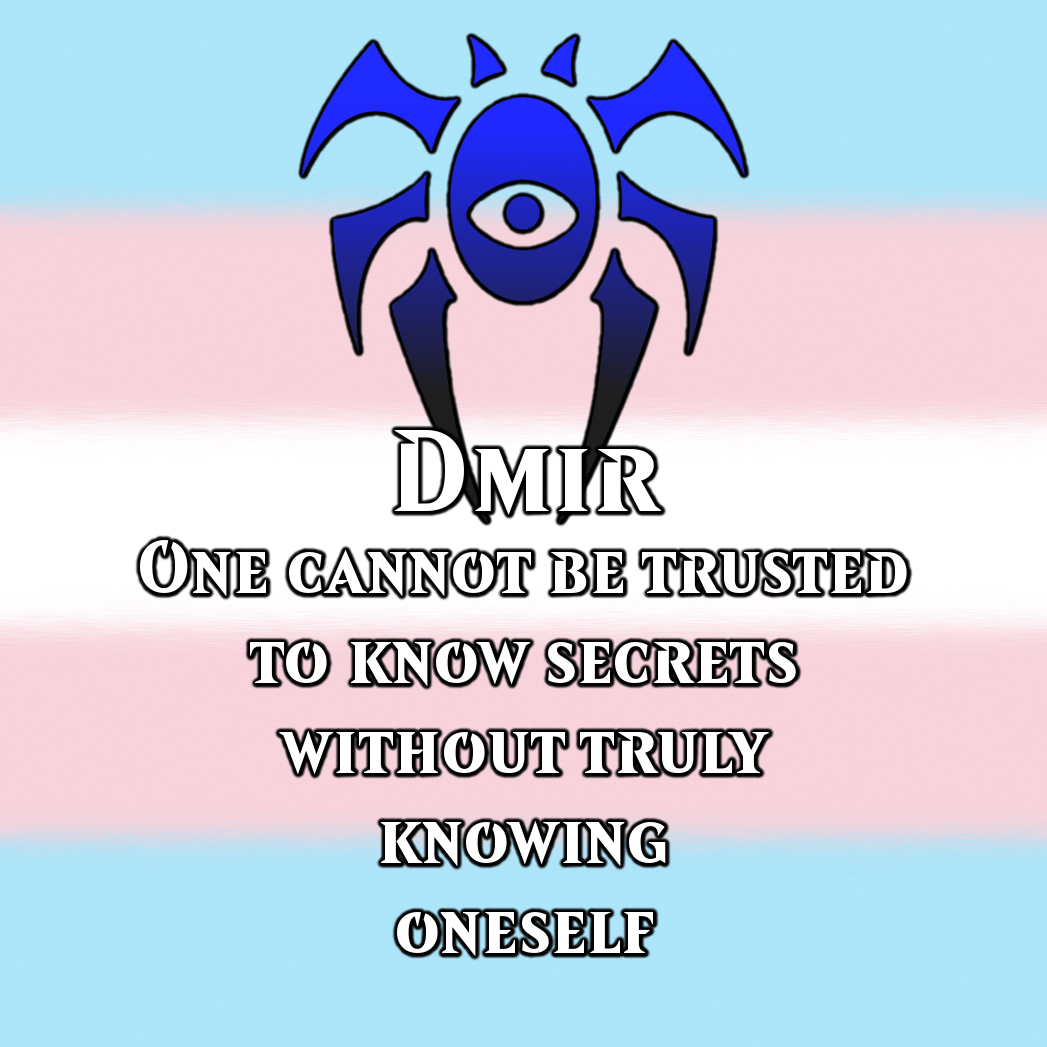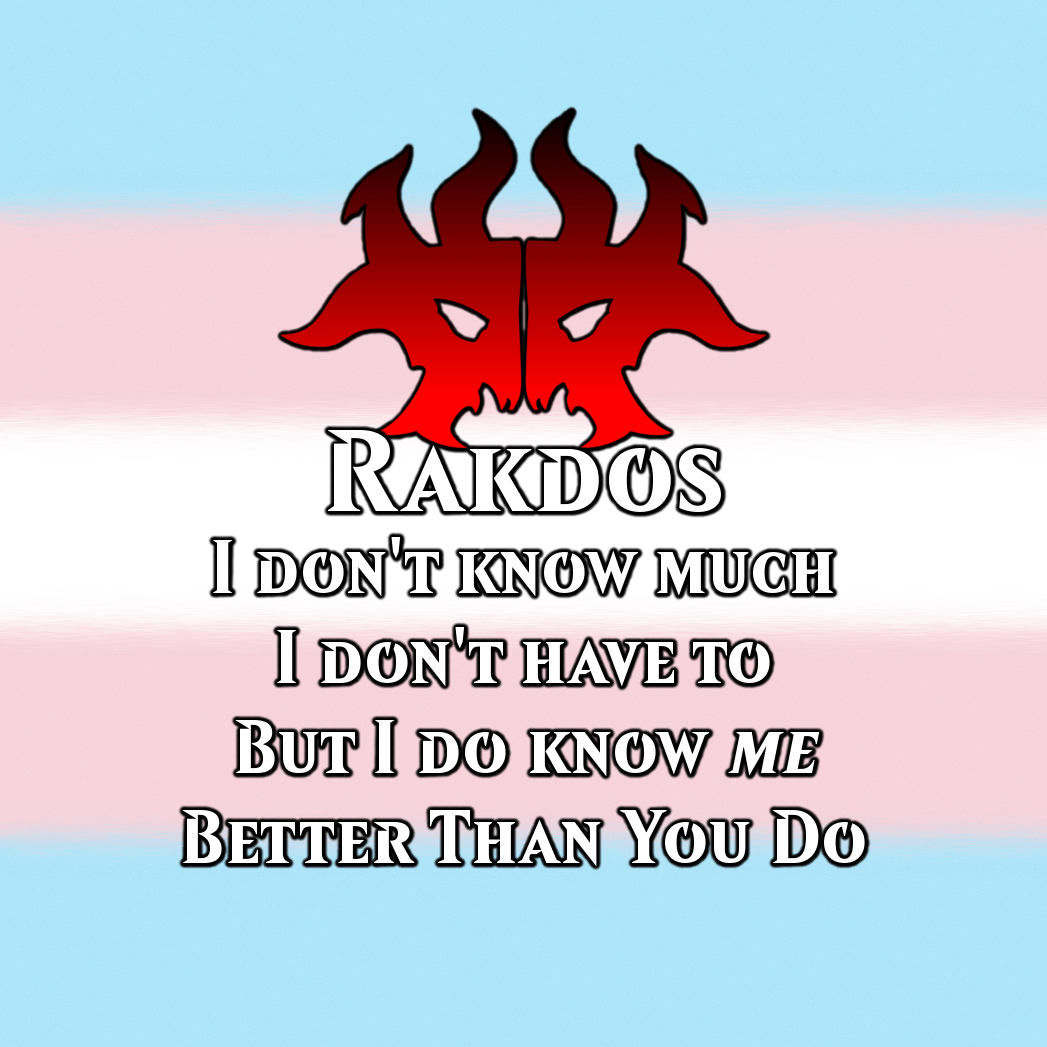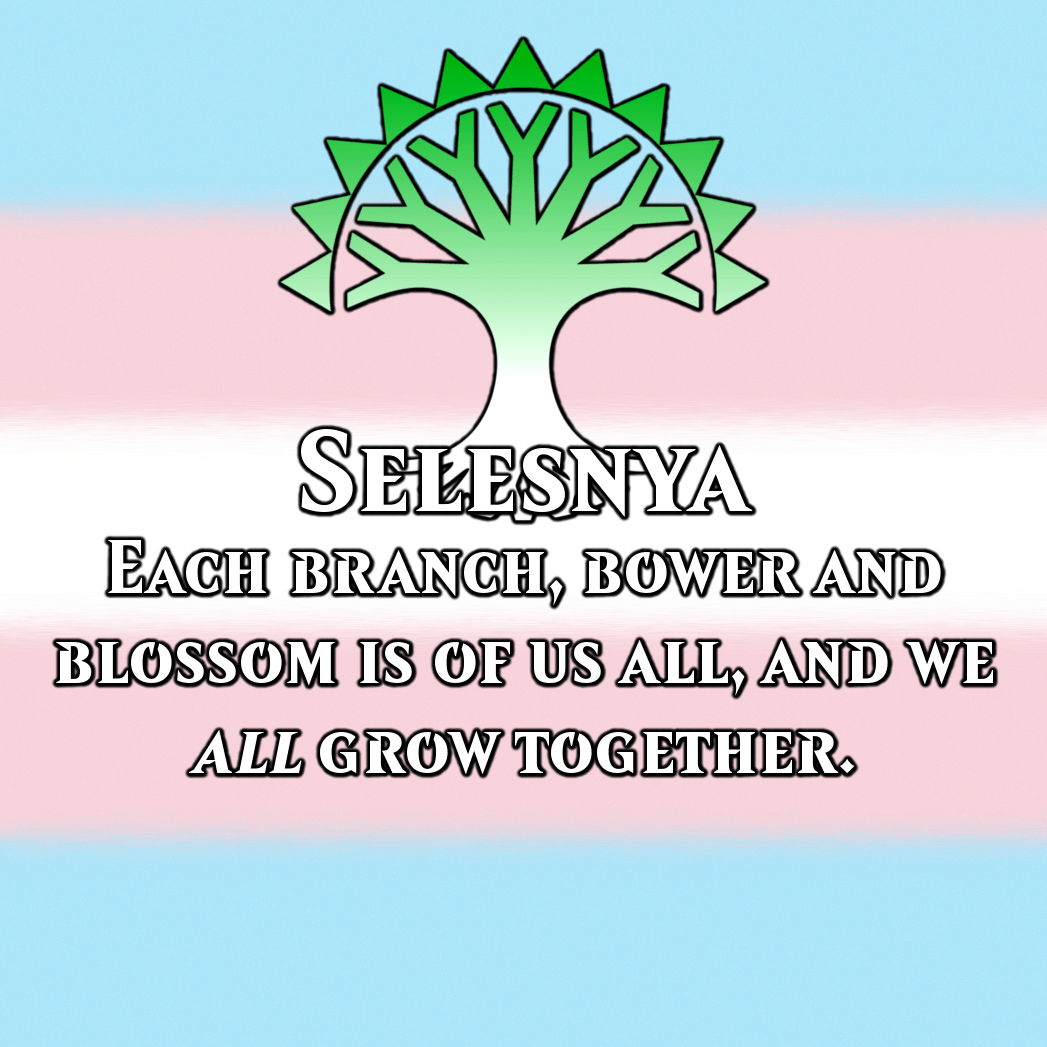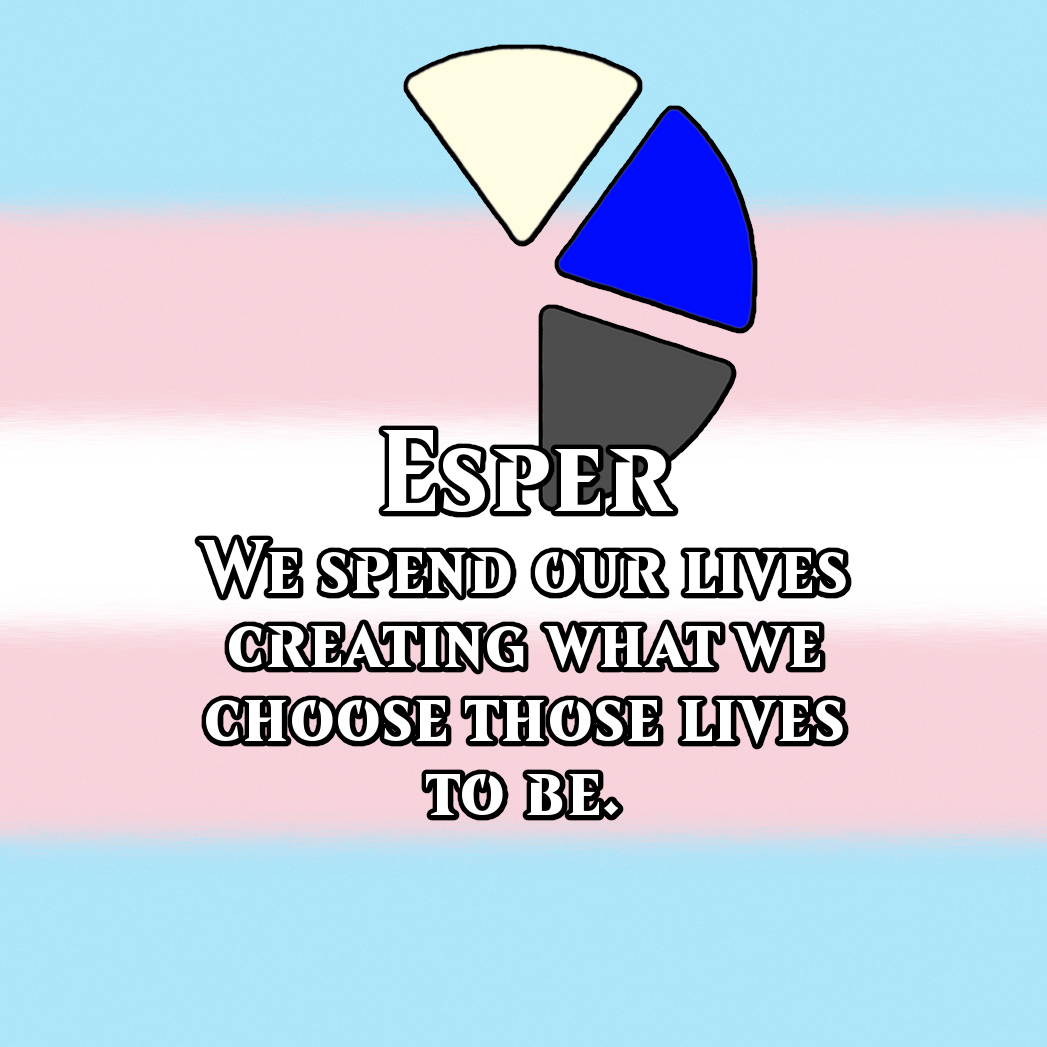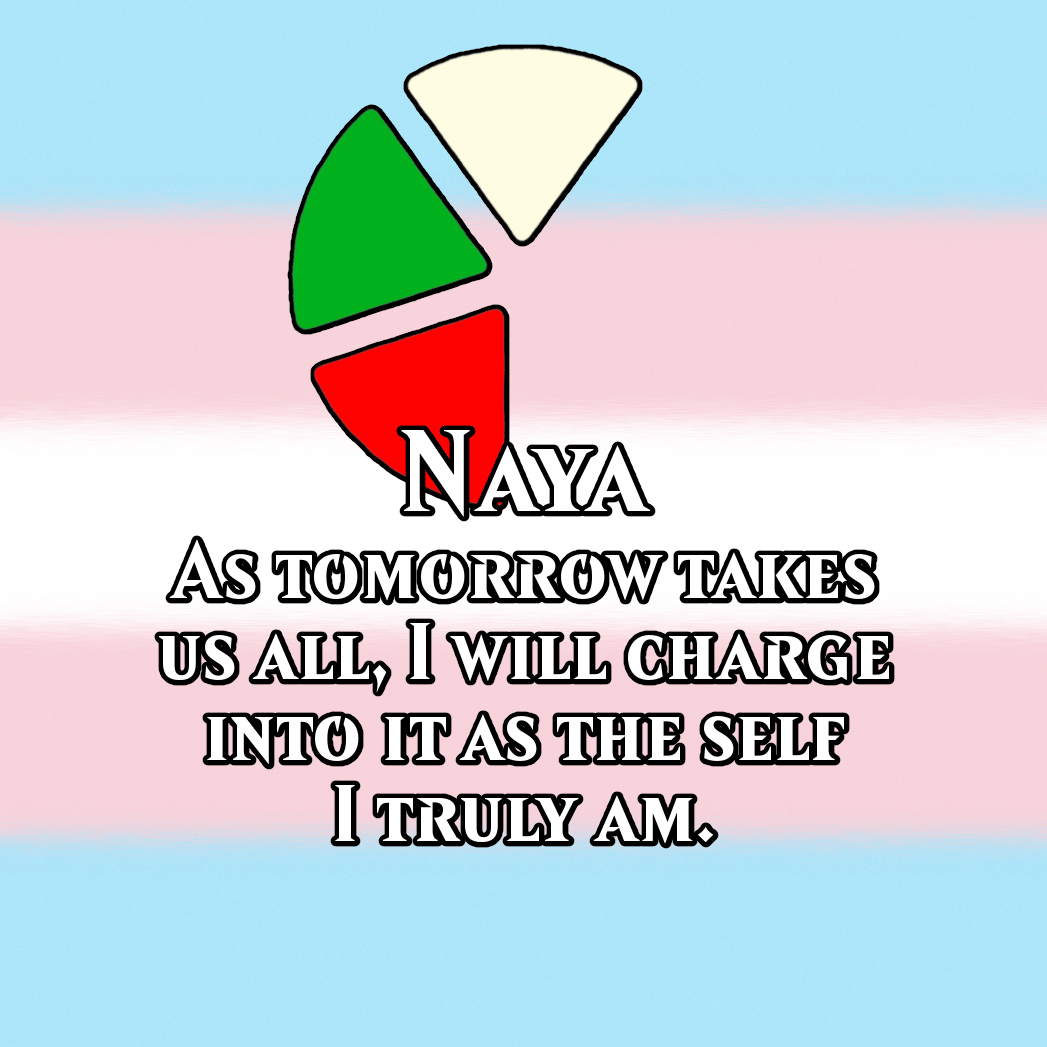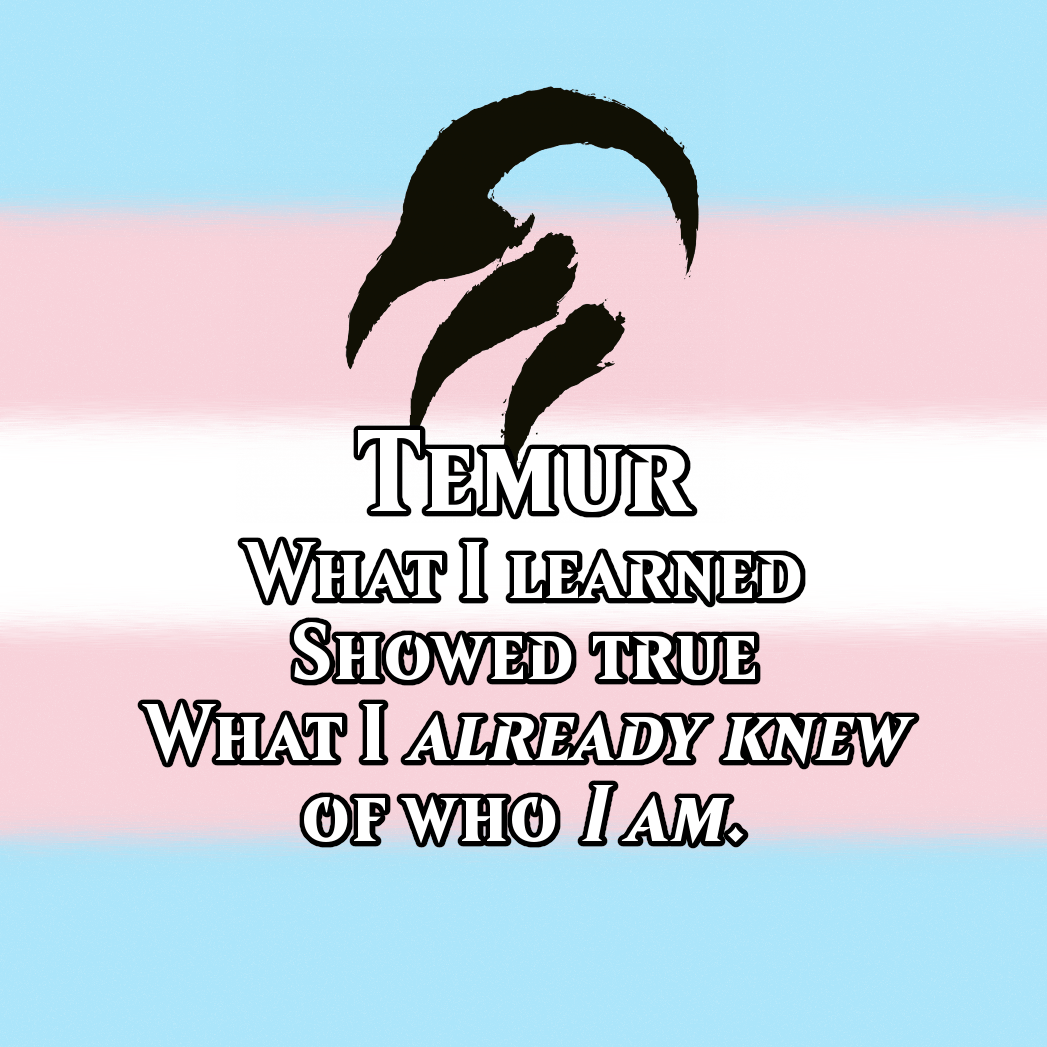January 2018 Wrapup!
How’d January go?
Daily blog posts? Check.
Weekly MTG, Game Pile and Story Pile posts? Check!
T-Shirt design? Check, here’s EWOKS ARE COOL, on Redbubble and Teepublic.

Game launched? LFG – Looking For Group, here at Invincible Ink and DriveThruCards!
Video? Well it’s been made but it hasn’t been launched…
Also on this month was a long weekend of D&D, AGDQ, my first PhD meeting and our three-day long weekend at Can-Con!
Game Pile: Sonic Adventure DX!
I’ve recently taken a habit of going back and re-exploring things from that twilight period of my learning that I could be a person, that I was going to have to shape a life in the wake of the not-apocalypse, and that’s been a mixed bag. Some things hold up – like Homestar Runner, and even some of Seanbaby’s stuff. Some stuff, however…
Okay.
Let’s talk about Sonic The Hedgehog DX.
Term: Hidden Role
A hidden role game is one in which a player or players, selected out from the group, have some element of their play goals altered in a way that sets them apart from the group. Hidden role games are not always asymmetrical team games, but they often are.
Utility
Hidden role games are most obviously useful for making deducing who is on what team part of the game. This is the basic core question of games like Secret Hitler and The Resistance: Avalon – the gameplay is almost completely about working that out.
Nonetheless, Hidden Role is not a mechanic limited to this. You can use it as part of a larger game, where for example, players are largely competing to put together a set of resources, while one player is trying to prevent that without being noticed. You can even make hidden role games where the hidden role is itself a power – look to games like Maskerade and Coup.
Finally, Hidden Role games can be made co-operative as a way to ensure quarterbacking can’t or won’t happen. Players can’t actually determine an optimal path of what players should or shouldn’t do without literally knowing what they actually can do.
Limitations
Hidden role games can kinda bottle anxiety. It can be exciting and thrilling to play a hidden role game with your needs and wants a secret, trying to keep from being caught, but it’s stressful.
Hidden role games also tend to be comparable to one another.
Examples
Maskerade, The Resistance, One Night Ultimate Werewolf, and Battlestar Galactica.
btw, I have no idea where that header graphic is from but it looks like it’d make a great hidden identity game
Rhyparography
There’s this term in art, typically used describing still life, of rhyparography. It’s a discipline that mostly is seen in some medium-poor light, as the term derives from a literal insult, meaning literally, a painter of mean things, or more cruelly, painter of dirt. More commonly it’s used to refer to representative art of fundamentally conventional, unremarkable objects. Some elements of hyper-realism in painting relate to this. Hyper-realism is a real as heck thing, by the way, and you can get a place to start looking by checking out the work of Pedro Campos.

The typical conversation about hyper-realism in painting is that it’s not rhyparography, because the point of hyper-realism is an effort to elevate the mundane object into a transcendant state. Rather, rhyparography is connected to the mundanity, the unexceptionality of the object. There’s also often some griminess to it – replicating dirt and smudges is a tricky thing.
What interests me about rhyparography is its special presentation in games. Many games are about constructing worlds through visual media, which means that there are people who, in the making of games, construct incredibly mundane unimportant things, sometimes in huge variety. Anyone who’s done texture work or asset packs knows that you’re sometimes asked to represent a huge variety of just stuff. Much of it never gets noticed. Some of it never gets used. There are asset store packs full of unimportant crap.
And they are all crafted.
It is a thing to think about: How much of what we create in games is the normal, unimportant and unexciting. There’s a quiet beauty in that, knowing someone spent time and effort rendering a discarded coke bottle on a counter top, so you could walk into that space and feel like this is a real space.
Story Pile: Minna No Boku No Hero Academia
Curious what you think of the permeability of shonen anime into the general consciousness, as seen in Everyone Making BNHA OCs. – Casey
First things first shonen anime is and has been part of the general consciousness for about thirty years now. My dad knows who Tobor the 8 Man was even if he didn’t, at the time know it was Anime, and Astro Boy is an institution world-wide. What’s more Goku, from Dragonball Z has the cultural cachet of Superman, which puts their general awareness in public attention around about the same level of, literally, Jesus Christ.
That said, there is something interesting about Boku No Hero Academia, a name that I feel it’d be a bit tired to make fun of at this point, and how it relates to Everyone Making BNHA OCs. Specifically, the thing that’s interesting isn’t that Everyone Is Making BNHA OCs…
… its that people feel okay talking abouti making BNHA OCs.
OCs are a really interestingly contentious part of culture. For a start, all creative characters both have them and don’t – the nature of all creative culture as a gigantic remix machine where things we experience become part of the things we create and how it’s all part of this greater framework generation and what we see as originality is really a shift in perspectives or a paradigmatic repositioning and oh god you’re falling asleep – but the other thing is, OCs are seen almost inextricably as embarassing. We use the joke ‘OC, do not steal’ as an inherent joke to describe something people shouldn’t care about, where the speaker is meant to care very much. The Sonic OC is a whole psychosexual bazaar at this point, something most people observe from the outside and awkwardly step around.
Fanart is an interesting mill of media where people often have very one-sided relationships with the work; they do not care about the artist and their opinions or input as much as they care about the other media work the artist invokes. Artists can use fanart as a stepping stone but there is a lot more fanart that goes nowhere than anything else, and the nature of the decontextualising internet means it’s often appreciated by people who have basically no connection to the artist, because they have connection to the media it flows from. Typically speaking, fanart is not a space to get creative – if there’s a character in a lineup from a show that didn’t come from the show, people will almost always see them as not appropriate.

Yet, BNHA has this strange phenomenon where people aren’t just making OCs for it, they’re also comfortable labelling them as such, sharing them, and then, within the framework of the series, using those characters to make fanart of the series. Here, check out this character, who I’m using to show off the way that powers in this really weird and interesting and cool universe could work out!
I don’t think BNHA is uniquely suited for this; you could have seen the same thing back in Ranma 1/2’s heyday, where characters all had ridiculous martial arts and possibly their own ridiculous magical spring. Heck, there was a ten year long roleplay thread on a newsgroup called GRIT that was just about people’s Ranma 1/2 OCs (at first – it spiralled off, as anything would).
What I find more interesting – what I find exciting – is that we’re at a point now where showing off your BNHA OC isn’t seen as inherently ridiculous. We’re reaching a place where when people say I care about this thing, and here is my inclusion in it, nobody says get that out of here. There is a welcoming in this concept space, and…
well, I find that exciting. I wonder how much stuff I’d love better, how much better I’d be at some things if I didn’t feel I was constantly being told I wasn’t good enough.
An Open Letter To The Mother Of That Screaming Kid On The Bus:
I had to try to remember to write this. I even noticed when I’d forgotten about the whole thing. I got off the bus, noticed the lights, ran to it, crossed the street and headed into the food court, where I thought, hang on, what was I thinking about? It took me a moment of concentration. Then out into the produce aisle at Aldi, I thought more about it and tried to remember what I was planning to write about – then remembered it. I had to work at it, I had to try.
I don’t remember what it was they chucked. I don’t remember your shirt, but I remember it had something written on it. I don’t remember if you had glasses or not. I’m writing this after trying to commit this moment to memory to write this piece. It’s going to go into a scheduler and it’ll get put up in maybe a week, maybe a month, depending on if anything bumps it, whatever. By the time this goes up, I will not remember you or your kid or the baby or any of it. It is a comforting amnesia, a thing that our brains do, pushing unpleasant things out of the way where we don’t need to deal with them.
I need to you to understand that: Because I need you to understand how I looked.
I know I looked uncomfortable. I know the screaming kid made me uncomfortable. I know that’s how I react to that sound. Your kid was screaming, and I mean screaming, I think, or maybe it wasn’t that bad, it’s hard to remember now, but the thing is, there was a screaming baby. Or small kid. Jeeze, this is hard to remember.
I know that sound makes me deeply uncomfortable. Me, I have a bad reaction to that screaming, and I know my problem solving for that tends towards aggression – I tend to shout at little kids or get mad at them when they behave badly, and I know there’s a part of my brain that thinks ‘hitting a kid will shut them up,’ and I don’t like struggling with that feeling. It’s just this little subroutine going on in my brain, over and over. Either way, I know I didn’t look happy. I know you and I made eye contact – that I sure remember.
And I remember feeling guilty, because I knew, in that moment, you almost certainly thought I was thinking you’re a bad parent, because that’s what I know people think and say and mutter to one another about people with screaming kids.
I just wanted to say : It was a fraction of my day. It was barely a moment. It didn’t matter. And I hate that I know this minor incident, this nothing event led to a person like you, doing a hard job and trying to decipher the behaviour of a small and loud bundle of person, thinking a person like me – multiple people like me – were mad at you. I don’t know about anyone else, but I knew in that moment that I was going to forget about this. That it was okay. That the screaming of a child wasn’t going to impose on my life for a long time, just annoy me for a minute.
I get it.
I wish it was easier on everyone, but it’s hard on me for a small amount of time.
MTG: The Chupacabra Discourse
There’s this old joke in Magic: The Gathering, and I know it’s old because it was old when I first told it, which was about ten years ago and I put it in an article. The joke runs, more or less thus:
How many Magic players does it take to change a lightbulb?
Two. One to do it, then one to tell them how they could have done it better.
This joke inevitably gets a followup from someone pointing out a better punchline, which is the most meta damn thing about the joke.
Designing Dominion – Timer
I like Dominion. Probably more than I should, really, given that I don’t play it very often. I think the thing I like about it is more its fundamental expression of a really robust platform to build games from. You can do a lot with Dominion that Dominion doesn’t do.
Here’s one simple thing that Dominion does that I like: Dominion has a minimum turn structure built into it. Now there are other ways to do it, but in Dominion, the game ends when three piles of cards are emptied. Which is to say, if players want to end the game as quickly as possible, you have an automatic dial you can put in your game for that. Let’s say you want a game to only have one buy a turn, and you want the game to last at least twelve turns or so, with four players. Right there, you can make the game end when there are three emptied piles, and have piles start at 4 each.
Simple little design component, but you can build on it.
Game Pile: Monkey Island (Remaster)
Yarr! Buckle up, me friends and hearties, time to talk about a classic of the point-and-click genre that’s got itself a remake on Steam!Continue Reading →
Term: Deck Builder
A deck builder game is one where building a deck of cards is the core mechanic of how one plays the game in play. This isn’t the same as a game where you build your own deck, like Magic: The Gathering, because in that case, building the deck is an experience you (usually) do on your own. In a deck builder game, you are typically doing something that builds the deck as part of the process of playing the game.
Utility
Deck builder games are great, because the mechanical structure of a deck builder lends itself to a lot of very satisfying things, while still being thematically really varied. Some deck builder games use the deck to represent short-term limited decisions and combat, some use them to represent the slow process of economic movement of kingdoms.
Deck builder games have a lot of room for variance. You can have games with a very rigid structure, like Dominion or games that do a lot with keeping things freewheeling like Star Realms. You can play with rarity or commonality, you can involve other elements like dice and boards. Deck building is really one of the easiest game types to approach as a designer who wants to make something really large without necessarily having the resources to make a big project.
Also deck builders, if balanced well, provide a lot of variance. If there’s no single best way to play, you can use a lot of things to make your play experience more varied and fun.
Limitations
It is one of the most glutted formats of games right now.
What makes this glut worse is that most players don’t need a lot of deck builders in their collection. One good one will usually do the trick, and some players will be dedicated Dominion collectors or Legendary collector, or maybe they just want a single big-box experience like Arctic Scavengers. The point is, everyone’s deck builder of choice tends to have a thing that sets it apart.
The other thing is it’s very, very hard to make a small deck builder. You need a certain quantity of cards, even cards that are very similar, to get the mechanism of deck building to work.
Examples
So many! Here are just a few.
- Dominion helped to establish this archetype recently and it has a really large number of expansions. It’s also not the best-edited game in the world.
- A Few Acres of Snow uses its deckbuilding to represent military communication
- Legendary is a hugely expanded franchise game with a lot of high quality art and whole storage boxes and whatnot
- Star Realms is a head-to-head deckbuilder that uses its cards to represent space ships and space stations.
- Arctic Scavengers uses the deckbuilding to represent scarcity and garbage, and has elements of player interaction
Reversing Footnotes
At some point in my childhood, I remember mentioning something I’d read in a book – which I had, but since I was four, I didn’t realise this was gauche. It was immediately rebuked as ‘not interesting,’ because ‘I just read it in a book.’
Then I spent my entire life trying to hide the fact I read books.
Telling people about stuff you’ve read, ideas you’ve heard, concepts you accumulated, life underscored, was rude, and weird, and gross and boring. You had to act as if you came up with things yourself, unless you were quoting television programs. I made it a habit to synthesise things in my head – it was not so simple as to read something and learn it, I had to find some way to restate it so it sounded like me saying it.
When I hit university, this behaviour, this habit, was proven to be not actually the way you should do things. University was a process of learning that being able to point to your influences, being able to direct where your process came from, to give meaningful context of what you had interpreted and found, was pretty much everything. I did alright in university, but this was overwhelmingly the hardest and most daunting component of my work. And then I started on my Honours thesis, a process that involved literally the opposite.
My thesis, at its core, was showing how I could play a game, interpret that game, then use components of what I experienced in that game to make a new game, documenting the point of inspiration and conception of different mechanisms. And moving on, this seems to be what I’d work on next: showing the process so people can see how it goes and see if they can do the same thing.
Story Pile: Yes Minister
I feel old.
I’ve taken in my efforts to stave off this feeling, but it’s undeniable. I feel old, even though I know full well that ‘millenial’ talk is targeted at me. Part of why is because the things of my youth are not the things of other people’s youth. I was raised on The Goon Show and I’m Sorry I’ll Read That Again and obscure Christian media. My media background was ultimately not for me – it was for my father.
Lots of it went over my head. The Goon Show had overtones of sex farce and tons of racy humour that I completely missed. I’m Sorry I’ll Read That Again built on a host of tropey fantasy and panto skit comedy that I totally missed, and I only now realise what a slide whistle means.
One series of my father’s loves, which was contemporary to my birth, and therefore, completely beyond me until, well, now, is Yes Minister.

It’s fascinating actually in that it has a lot in common with Seinfeld. While the point of Seinfeld was that it was a show about nothing1., with stories that showed people spending huge amounts of effort on tiny nothings, the thrust of Yes Minister was inverted. Episodes of Yes Minister are spent ranging across spaces of days at a time, with enormous outcomes on the line, in which almost nothing ever gets to happen. But while Seinfeld’s narrative structure is bent to the frantic expenditure of energy achieving nothing, the narrative of Yes Minister is the frantic expenditure of energy achieving nothing.
It’s that kind of word play is throughout the series.
It’s also a show where instantaneous communication as we have it now would totally desolate some plots.
One of the challenges of making a sit-com is that it’s meant to be a situation comedy, a comedy that exists, as it were, in situ, in its own place. The dialogue therefore is trying to serve both comedy, with timing and wordplay, and also be some form of naturalistic. You can look at the comedy of say, Everybody Loves Raymond or Big Bang Theory with gigantic, stratified pauses between people talking to allow for reactions, which well, we’ll pretend that’s actually about the jokes being funny rather than signalling that they are meant to be. Anyway, the point is that it’s very difficult to make dialogue serve both funny and natural.
Yes Minister achieves this by having the comedy in dialogue mostly derive from the three voices in almost every given room be either deliberately obfuscating and smug, well-intentioned and prone to blurting, and wavering between the three the voice of Jim Hacker trying desperately to be funny and score a point of the others as a way to signify his own intelligence. This is a series of people being witty at one another, and in the context of the space they’re in, this is naturalistic dialogue. They want to show they’re smarter and funnier than one another.

The really interesting thing to me, now, about Yes Minister, watching it in hindsight isn’t so much that it’s funny – it is, it’s very funny, if you like a particular kind of playfully cynical word play and manipulation – or even that, it’s about how much of the narrative is things that we are dealing with now.
British Government is a fascinating warren of discretions and traditions and importantly deliberate vaguearies, and Yes Minister is set in a time when the EU is about to come into being and the Cold War was still quite cold. Countries in Africa were escaping colonial power. There’s a recognition that America is both powerful and blisteringly foolish as a global power, and there’s a reasonable expectation that the government is spending much of its time trying to move things around and that a lot of what’s going on is actually in service of nothing.
There is a fascinating intricacy to it all where largely, the sheer scope of British bureaucracy is presented as both a problem and a result. The size of government and the people involved in it, the story tells you, are related. You can’t ask for more work without asking for more people to do them. There’s talk about the UK’s role in the then-nascent EU, which was explicitly framed in terms of the very cultural reasons the UK saw the EU as an opportunity to join – or rather the EEC, at the time.
It’s all so interesting to me because it carries within it some very real but very cynical truths about the way things happened. Things that I like, things I believe in, could almost always be viewed in terms of short-term pettiness and spite. And it serves as a counterpoint to The West Wing, which was as much fanfiction of how America could have been in the late 90s as it shows an England of the early 80s.
What brought me to check this out again?
It was this quote:
Sir Humphrey: The only way to understand the Press is to remember that they pander to their readers’ prejudices.
Jim Hacker: Don’t tell me about the Press. I know *exactly* who reads the papers. The Daily Mirror is read by the people who think they run the country. The Guardian is read by people who think they *ought* to run the country. The Times is read by the people who actually *do* run the country. The Daily Mail is read by the wives of the people who run the country. The Financial Times is read by people who *own* the country. The Morning Star is read by people who think the country ought to be run by *another* country. The Daily Telegraph is read by the people who think it is.
Sir Humphrey: Prime Minister, what about the people who read The Sun?
Bernard Woolley: Sun readers don’t care *who* runs the country – as long as she’s got big tits.
1. I personally don’t buy this. Seinfeld seems to really be a show about how it’s totally okay to be a self-obssessed prick.
Space Quest IV’s Really Fucking Gross You Know
Space Quest is a game franchise that was first released in 1986, and saw installments in 1987, 1989, and then we had the release in 1991 of Roger Wilco vs the Time Rippers. In this franchise, the fourth game includes something fascinating and interesting. These games had let you travel through space at light speed, eat intergalactic foodstuffs, save the universe multiple times, shoot down spaceships, create a star and travel through time and dimensions, but it was in Space Quest IV they let you have
half a conversation
with a woman.
Puttin’ a fold because cw: sexism and some transphobiaaaaa,
Continue Reading →MTG: Rivals of Ixalan ‘Review’
I try to work in advance when it comes to blog posts. I like making sure that I have a backlog and that gives me some flexibility to slot more current ideas up in ahead, and make sure to the blog doesn’t just repeat the same type of content endlessly. Sometimes it’ll be a short little snippet of a deck I’m enjoying, sometimes a long slow process of building one whole deck, and so on.
Still if there’s ever a kind of free content in MTG it’s the set review. A giant pile of things to look at, and the things in that set you’re expected to have an opinion on. I remember back in the day set reviews used to be both comprehensive and awful, and also tended to weave back and forth between trying to consider cards for multiple different formats, without any clear signalling. We were awful at it.
My plan with Rivals of Ixalan, then, was to use the set as a set review video fodder. Just make a very rudimentary video showing what I thought of each card and having some fun with that. I thought I’d surely get a bunch of cards out of that set that way, and maybe then I’ll learn how to make a good video out of that.
And y’know what?
I just don’t.
The thing that’s most remarkable to me about Rivals of Ixalan is how modest it feels. I know there are some cards I want to play with – [mtg_card]Tendershoot Dryad[/mtg_card] is exactly the kind of card I love to muck around with, for example – but was there a whole video’s worth of content? I recorded my thoughts on every single card in the set I had anything to say about, and with an introduction, it all wound up at about nine minutes.
I’m not trying to run the set down. I am sure when I get to play with the cards and put them into decks and learn about them, I’ll have a lot more fun with them and know what they’re good for. Maybe I’ll play more Standard this time and find fun decks there rather than keep going back to the Commander 1v1 format for my kicks. I do kind of wonder how much a set review has value any more – even other set reviews I’ve watched have failed to inspire the same spark. There haven’t been moments of ‘oo, I hadn’t considered that.’ Everyone has more or less the same things to say, the same comparisons to make.
I like the Forerunners. I like the [mtg_card]Ravenous Chupacabra[/mtg_card] (and I have words about that Opinion That’s Being Widely Repeated). I really like [mtg_card]Tetzimoc[/mtg_card] (who won’t work in Commander the way I want), and the [mtg_card]Thrashing Brontodon[/mtg_card] is a rare card that slots into my [mtg_card]Death Cloud[/mtg_card] Rock, dead as it is.
But that’s pretty much all I got to say about the set. Or rather, the main thing I have to say about the set is that I don’t have much to say about the set compared to just having an interest in some individual cards.
Term: Roll-And-Write
Roll-and-write games are games where there are dice and there are ways players can record information. That’s all a roll-and-write needs. It’s dizzying when I realise there’s this kind of design space I literally never considered. Now, I understand this being gamer culture, someone is going to look at me and go get a load of this guy, never played a roll-and-write, thinks he’s qualified to talk about games and to that person I will say, look, that’s very needlessly hurtful and also every day we all discover something new so maybe relax a little and try to enjoy the world we live in in the small ways we can, Chad. I don’t think that person’s named Chad, but the odds aren’t any worse than any other name so let’s go with Chad.
Utility
It’s a format ripe for print-and-play. You don’t need anything but dice, which can be standard dice or random dice or any old garbage you want. You could make it build off a literally random assortment of dice, or you could make it care about your specific D&D dice
It seems it could scale well. One player could roll a handful of die and then a whole table of people could all react to it with their own little territory. This makes it useful for games with simultaneous play, but also means the game could be a solitaire game that can be shared!
It lets players make individual choices! Players don’t just have to write standard game information on their board – it could feature rooms for things like a name for your space-ship or the character’s interests!
It’s got a lot of space for assets! Cards have to do a ton of work in a small amount of space and because cards are small objects, text and symbols have to be pretty large. But a sheet you’re meant to look at can use a lot of contiguous space to look pretty!
It can have memory! You can have sheets that give information about what to carry over to the next sheet!
I’m pretty interested to explore this space. One thing that struck me researching the genre is how many of these games are theme light and system heavy. I’d like to see if I can do something that works differently, that has a strong, meaningful theme that lets people feel connected to the thing they’re building.
Limitations
In the end, if you’re writing on pads, they want to be disposable or they want to be dry-erase. That’s not an easy cost to overcome. There’s also kinda a sad undercurrent when you print out pads for roll-and-write games – I mean in a lot of cases people play a game 2-3 times and that’s it. If you provide a pad of 80 sheets for a game that’ll only ever use 8, you’re paying extra money for your own optimism.
Examples
Castles of Burgundy, Yahtzee, Pass The Pigs to an extent.
Game Pile: Star Realms
What with my regular chatter about card and board games, and this blog having a feature about videogames, it seems in a way Star Realms is sort of destined to be here.
The Pisscourse
Sure, let’s do this. Why not. Why not. It’s just a Daily Mail article.
In mid September 2017 the Daily Mail copy-pasted an article – more or less – which was about little boys peeing on things, and science, and gender essentialism and making women researchers look silly, and they love that kind of thing. You can almost test whether or not a story will show up on the Daily Mail if you imagine whether or not the average Daily Mail reader could read it and either dismiss the ‘expert’ they laughingly frame as an idiot, or act as if ‘well of course, who doesn’t know that.’ This one got to add a bit of gender essentialism and Terfy Overtonse, so of course this was going to be a hit.
The article is being shared around as if the Daily Mail had shared quack science proving that men are better at physics because they pee on things, and then dismissed this science with the evidence that urinals are dirty. You probably saw this joke. A few times.
There are three problems with this article – which I’m not linking. Before we go on, this article is going to talk about dick-havers and refer to them as generally male. This is not the absolute case. This is not what all dick-havers are. Just wanted to get that out there. When we talk about structural power and things Men do, however, it is very common that most men have penises, and that’s part of the assumptions of this article. So if I sound like I’m being Not Actively Trans-Inclusive enough please recognise it is a shorthand when talking about existing Men-based power structures, which are notoriously unfriendly to trans women and also tend towards disqualify and exclude them from wielding privilege.
Anyway, with that in mind: Here’s a fold!
Making Tattered Paper
A thing I do a lot of in making card faces is making regular shapes look a little irregular, but not too irregular. I could lie to you and tell you this is an artisinal process that involves the most delicate of careful cutting and a modular straightedge device, or I could show you how I do it in GIMP.

Start with your shape. Margins are for another time, but basically remember that you want to make it a bit bigger than the text it’s going to rest under. The background in this image is that grey, so it’s not part of this equation. Heck with that grey.

Next, use the filter NOISE > SPREAD and set that value to something high enough you can eyeball and notice it. Like 2-3 will be visible if you’re dealing with a very small shape, but on a bigger shape like this one (520 pixels by 400 pixels), you want a larger value. I use 35 pixels here.
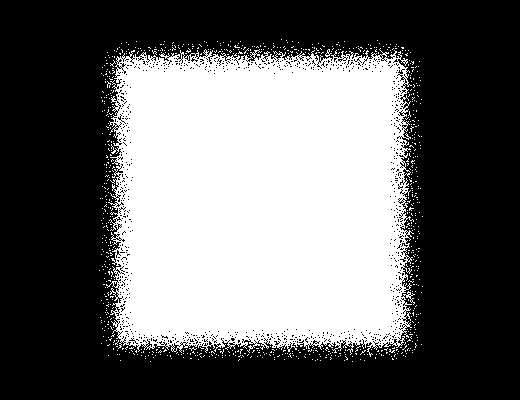
Next up, set your background colour in the palette to black, and choose the layer, then choose Remove Alpha Channel. This gives you something that looks like this.

Next up, you go to the filter ARTISTIC > OILIFY and play with those sliders. They’ll turn that noise into an edge. Now in this case you’ll notice it’s still got some softness, a bit of blurring, which we don’t want.
 Then go to COLOURS > Brightness-Contrast. Adjusting the contrast up gets rid of that greyness and turns it to white or black.
Then go to COLOURS > Brightness-Contrast. Adjusting the contrast up gets rid of that greyness and turns it to white or black.

Next up, you go to COLOURS > Colour To Alpha. That lets you turn one of the colour values in your layer to the alpha channel – which is to say, it just strips it out and makes that transparent. Now you just got a whiteness, see?

Next up, filter LIGHT AND SHADOW > Drop Shadow. That filter will put this shadow underneath it, and you can play with those settings.

Then grab a paper texture from the internet – you can find them on google image search while looking for pieces that are Labelled For Reuse. Put it into the document…
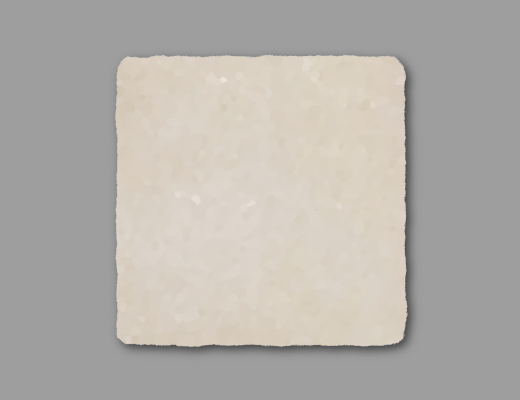
Then put that layer over the white image and set it to Multiply.
Now, if you do this by default, that paper texture is also going to lay over this grey background I have here, but I didn’t let it do that because I care about you. The way you keep a multiply layer under control is you put it in a folder, like this:
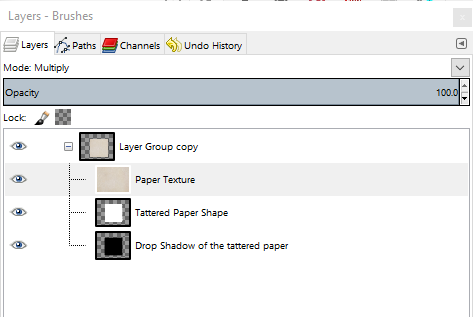
Anyway, the short list of steps:
- Draw shape
- NOISE > Spread
- Remove Alpha Channel
- Artistic > Oilify
- Colours > Brightness/Contrast
- Colours > Colour to Alpha
- Light And Shadow > Drop Shadow
- Add Paper Texture
- Multiply Texture Layer
Hope this is helpful!
Story Pile: Gargoyles
There are two ways to approach this introduction; there’s the good, virtuous, but also incredibly self-aggrandising way, where I talk about how the root of all humanity and empathy is an ability to connect things to one another through human interfaces that we would not have otherwise thought to do, and that drawing connections others haven’t seen is what we call genius. Then there’s the meanspirited way which is pointing out that being able to point out how two seemingly unrelated pieces of media are connected is basically the academic equivalent of popping a wheelie and demanding people be impressed.
Anyway, nobody made Gargoyles.
The Sad Inadequacy of Twitter
I got onto twitter around six months after starting this blog, and about six months after that, I implemented a notification system so that my posts were shared with twitter. Some experimentation about time of release and content types aside, I have a fairly robust sampling of what twitter traffic does, what a conversion rate is like. I’ve had a little handle on same with Tumblr, which is also integrated, and there has been a small amount of facebook data.
Obviously, doing all of these things to promote your work is ‘free’ and by ‘free’ I mean definitely not actually free. It’s work, it’s social, and it involves associating yourself with companies that are, at the least bad.
Sadly, if you’re a creative developer holding your nose and dealing with a shitty company full of horrible people just for the sake of promoting your work, it seems that that company that gives a better return on investment is reddit. Facebook seems to get me some good hits, but broadly speaking if something of mine gets ridiculed on reddit it still gets me a huge number of hits.
I can’t tell you how that converts to sales, becauuuuuse I don’t sell much on the internet.
Flip It Or Rip It: Breaking The Taboo
Last year’s disgusting abuse of Christine Sprankle did throw up one interesting topic of conversation: The folk game Flip It Or Rip It.
The actual process of play is a bit ambiguous to me – there are a few variants of the play form, but the basic central mechanic is that players choose whether to quit the game and keep their cards, or rip up a card and keep proceeding through the deck of cards. It’s often compared to Russian Roulette with Cardboard. The game doesn’t have a lot of play to it – there isn’t much strategy beyond deciding if you want to keep going and what that, individually, means to you.
Magic players seem pretty split on this game. Some engage with it, and don’t seem to comment much on internet forums, and some don’t, and think the first group are monstrous. Not only do they find the process monstrous, but they cite it as a moral failure, and compare it to a variety of related failings – comparing it to overwhelming wealth and privilege, blaming it for raising prices in the secondary market, and comparing it to drunk driving of all things.
I’m not here to advocate for it, but I’d like to present an alternate take, a take that maybe kinda gets lost:
Magic cards are things.
I can understand if you want your cards to be safe and sanctified and cared for. I can understand if you want to make sure that your cards, in your possession, are extremely well kept. That’s okay. But the cards, themselves, are not $50 bills. They are not gold or stock or precious gems. They are things, objects, and part of their thing-ness is that they can be destroyed, that they have the meaning to which we attach them.
And, the big reason why I talk about this… when you start to remember these are things, you remember that they’re things you can play with.
Magic is a rules-based game with a truly dizzying amount of complexity. It’s about fine inches and a rules structure that is absolutely massive. It’s a really, really interesting game, but that game is a game you can play with Magic cards. Know how I got started making card games?
I started making card games by taking Magic: The Gathering cards and modding them. By writing on them with a pen. By defacing them, by rendering them valueless. It was a way to make proxies, a way that was fluid and flexible and fast. Some cards got thrown in the recycling. Some cards got cut into tokens. And this was the dark magic of that sanctity: It stopped me viewing Magic Cards as cards, as pragmatic objects that can be used for things. It made them into Magic Cards, cards that were… well, magic.
And that magic kept me from seeing that the boundary between what I can do and what Magic does was a lot thinner than I thought.
And that creativity started with a quiet act of destruction.
In The Tank
There’s this term used for describing when players are thinking a great deal about their choices in games, and it’s called being in the tank. During this stage, players are prone to lapse into quiet as they concentrate on a complicated game state.
I don’t think it’s a problem when games let you go into the tank, or that games require you to go into the tank. Some games like Chess, are basically built out of tank moments, where players do everything in their power to give as little information about what they’re doing as they can while still engaging with the game, even if that’s something of an optimistic myth.
Still there is a problem that comes up when games, I feel, regularly lapse into protracted silence, where players are quiet purely because they feel they have to be silent, when they cannot play or communicate or make deals or interact with the board state in the interest of courtesy, of not hindering other players’ play. Magic has these moments on the pro tour, but games that are less formally structured, with less on the line, sometimes get infected with this experience: A player needs to concentrate very hard, and the whole game lapses into that silence.
I think the problem, inasmuch as this is a problem, is how the game is designed, and what the designers and players value. It’s not a problem if games in general have quiet moments, moments of rising tension, moments of quiet, but some games – such as Imperial Settlers send players into the tank as quickly as their third decision – in a long game full of decisions! What makes this really awkward is these are games where players, largely, can’t interact much with one another – there’s the razing in Imperial Settlers but for the most part these really quiet thinkfests are games that keep players segregated from one another.
This isn’t a good thing or a bad, per se – but if your game sends people into the tank ask if that’s something you want them to do. Ask if you want the game to be moments of long, intense thinking and decisions that can result with an unhappy outcome. You might be making the play a bit too arrested, or you might want to start introducing reasons for players to talk to one another. You gotta remember, gaming is a social activity – and if you do it well, it’ll give you a chance, more than enjoying the game, to enjoy the game with your friends.
Game Pile: Psychonauts
Last year saw the release of Yooka-laylay, a game that launched to thunderous shouts of Okay, a game which some people hated a great deal (because they didn’t like it), and some people hated a great deal (because it’d been edited to kick out a white supremacist, and I’m not linking that disingenuous crap), and some people thought was pretty okay (because they liked it, but didn’t find it that amazing). This conversation put me, particularly, in mind, of the last collect-em-up game that I really liked: The anarchic, quirky and deliberately weird Double Fine excursion Psychonauts.Continue Reading →
Term: Roll-And-Move
Roll-and-move refers to a mechanic where players are given a field to move in, and roll dice to determine how and where they can move. They might be moving freely in a grid, or the dice values might determine where they can or can’t go. The basic mechanic is simple, though: Roll any number of dice, and use that information to determine your movement in some way.
Utility
Roll and move is effective as a starting point mostly because it’s really, really well known: Most people know a roll-and-move game and they get it quickly. It also has a lot of underexplored space: most roll-and-move games these days tend towards moving in one direction, like Monopoly or Trouble, but there’s a lot you can do with it – roll and move could be useful for representing things like the pull of variable things, or weather patterns, it could be useful for acceleration or deceleration effects.
Limitations
Roll and Move is a bit of a pariah mechanic in games because there’s been a lot of really bad roll-and-move games made that were distributed. What’s more there are some games that would be pretty good if they didn’t use Roll-And-Move and instead came up with some better, more thematically appropriate scheme to handle movement. Basically, Roll And Move is something of a Default and it shouldn’t have to be, nor should people feel obligated to consider it as such.
Examples
Some roll-and-move games include Hero Quest, Monopoly, and Snakes and Ladders. It’s obviously not a well-regarded mechanic but that doesn’t mean you should consider it unusable – it’s also the basis of the game Camel Up, and is explored in Formula D.
The Art of a Cover
Friends of mine and I have discussed ‘the most perfect cover.’ That is to say, a cover version of a song that stands on its own as excellent without simply being a better version of the original. There are three that Fox, Jeb and I have forwarded, and I present them here for your viewing pleasure.
Jeb offered Willie Nelson’s Rainbow Connection.
Fox suggested Green Day’s I Fought the Law.
And I posit that it’s this specific take on I’m A Believer by Smash Mouth.
I unironically love all three of these. Willie’s lilting softness and sadness echoes of an older man than Kermit reflecting on things past rather than on things to be. Green Day take a song made for the ultimately commercial rationale and imbue it with their own jangly discord. And I’m a Believer is one of the most famously hollow songs ever, being performed by a band renowned for being hollow, rendered in this slow, dazed, creeping musical intonation.
Story Pile: Drive
Drive is a 2011 movie from Danish director Nicolas Winding Refn. Defining what Drive is is a little bit tricky, because while it has the elements of a heist movie or a crime drama or something in the vein of a mood piece it’s sort of none of these things at the same time. Described by some as neo-noir and by others as sunset noir, Drive is a brooding, slow-boil movie about being three quarters of the way home and knowing that something terrible is coming with you.Continue Reading →
Term: Builder
A BUILDER game is simple to explain: It’s a game where you build something. That makes it sound silly to describe, but it’s a place to start. Most games can qualify as builder games. Dungeons and Dragons has you build a character, Betrayal at House on the Hill has you build a house, and Fiasco has you build tension. But those aren’t really games that fit the term ‘builder,’ because ‘builder’ is really a term about how the game feels.
Builder games are games where your primary focus is on building things, and those games tend to be games with a sense of material to them. You’re building a thing that you can look at and watch grow, and the feeling of that thing growing is meant to feel rewarding. In Betrayal At House On The Hank Hill, there’s no personal connection to the growth of the house, and in Dungeons and Dragons the building of a character is of a slightly immaterial thing. Magic: The Gathering requires you to build a deck to play, but unless you’re drafting, you’re not building the deck on the spot.
Utility
Builder games are games with a lot of inherently obvious value to them. Making things is very satisfying. You can use building to be part of the challenge of a game, as with Junk Art or you can use it to be the reward for playing, like in Dominion.
There are a lot of things you can use Building for, representing a whole host of different themes. It’s almost too broad a term, but I want to put it in this little dictionary of terms because when I refer to a builder, or refer to builder mechanics, I want it eaisly conveyed I mean a game where making something tangible is core to the experience.
Limitations
The biggest limitation of builders is that the bigger the thing you build, the more difficult it is to easily mentally parse it. Builder games often inherently increase in complexity! If the building components don’t increase in complexity it can be unsatisfying to watch the builded thing grow!
Examples
Games with good ‘building’ feels to them are often deck builders, like Thunderstone, Star Realms or Dominion, or they’re about building up a thing in an empty space. Some games like Dream Home have an element of builder to them, but that’s filling out slots on your board, and may feel less rewarding. Some games like Barenpark have that same effect, but the process of building is more difficult and may feel more rewarding. Same to with Galaxy Trucker, where you’re building within a box. A game that has more of an open builder feel might be something like 51st State or Imperial Settlers or Seven Wonders.
No Colour Is Transphobic Masterpost
Yeah I posted this on Tumblr, but I want this to be searchable.
Lazy Stuff!
I tweet a lot. Sometimes I tweet things that, in hindsight, I feel should be blog posts – to be more readily searchable, and findable by people later on. It serves to put what I have to say on the record a little more cleanly and also lets me do nice formatting and position pictures prettily.
With that in mind I’m going to start turning some twitter threads I liked or feel I want to reference later into blog posts. I do recognise this is less work, though, and so they will be labelled Lazy Stuff, just to keep it honest that I’m working from a draft.
Game Pile: DOOM 2016
Content warning: violence, gore, demonic imagery. Basically, Is This Doom-y? Yes. It’s Doom-y.
Continue Reading →2018 Going Forward!
Let’s mark out some clear, distinct, achievable goals.
- One completed game design a month.
- One t-shirt design a month.
- Daily blog posts, with weekly entries for:
- a Magic The Gathering article
- a Game Pile article
- a Story Pile article
- A video a month
That seems doable to me. What makes this complicated, though is that I’m also going to be doing a PhD. So… that might transform my workload. We’ll have to see.
So why do I bring this up? Well, first, laying it out like this is a good way to make sure I have a plan. I’ve found making something of what I do accountable is important. The other thing is, I’m going to spend January looking into launching a Patreon, which will be about:
- work-in-progress stuff on game designs
- group sales of games where if I can get 20~ people interested, I’ll send out bulk copies of games without postage
- voting and contributions directly on future game content
- raising money to hire artists!
There. That’s it. Stated. A plan.
I can’t necessarily weasel out of this easily. Weasily? We’ll see.






